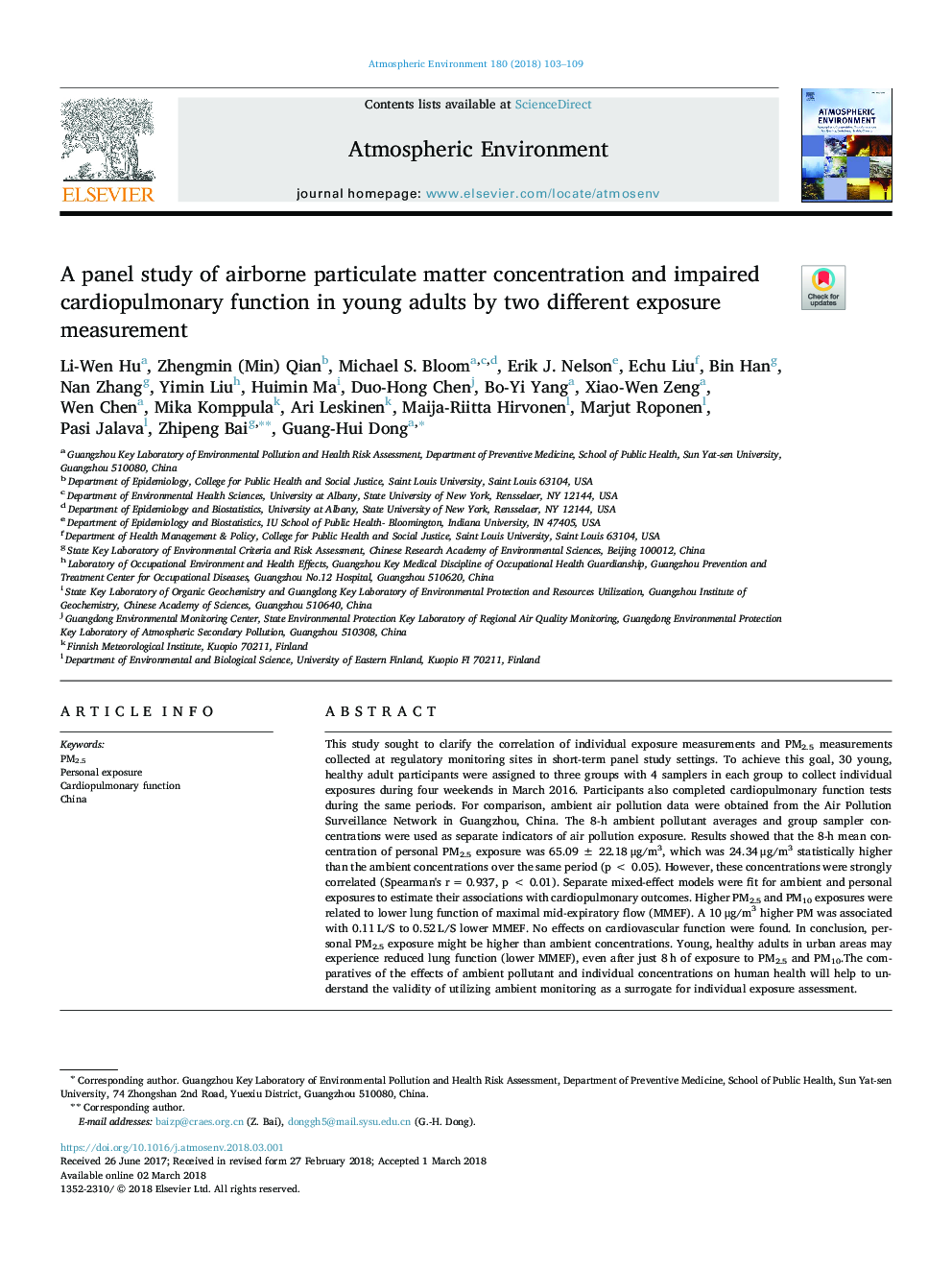| Article ID | Journal | Published Year | Pages | File Type |
|---|---|---|---|---|
| 8863942 | Atmospheric Environment | 2018 | 7 Pages |
Abstract
This study sought to clarify the correlation of individual exposure measurements and PM2.5 measurements collected at regulatory monitoring sites in short-term panel study settings. To achieve this goal, 30 young, healthy adult participants were assigned to three groups with 4 samplers in each group to collect individual exposures during four weekends in March 2016. Participants also completed cardiopulmonary function tests during the same periods. For comparison, ambient air pollution data were obtained from the Air Pollution Surveillance Network in Guangzhou, China. The 8-h ambient pollutant averages and group sampler concentrations were used as separate indicators of air pollution exposure. Results showed that the 8-h mean concentration of personal PM2.5 exposure was 65.09â¯Â±â¯22.18â¯Î¼g/m3, which was 24.34â¯Î¼g/m3 statistically higher than the ambient concentrations over the same period (pâ¯<â¯0.05). However, these concentrations were strongly correlated (Spearman's râ¯=â¯0.937, pâ¯<â¯0.01). Separate mixed-effect models were fit for ambient and personal exposures to estimate their associations with cardiopulmonary outcomes. Higher PM2.5 and PM10 exposures were related to lower lung function of maximal mid-expiratory flow (MMEF). A 10â¯Î¼g/m3 higher PM was associated with 0.11â¯L/S to 0.52â¯L/S lower MMEF. No effects on cardiovascular function were found. In conclusion, personal PM2.5 exposure might be higher than ambient concentrations. Young, healthy adults in urban areas may experience reduced lung function (lower MMEF), even after just 8â¯h of exposure to PM2.5 and PM10.
Related Topics
Physical Sciences and Engineering
Earth and Planetary Sciences
Atmospheric Science
Authors
Li-Wen Hu, Zhengmin (Min) Qian, Michael S. Bloom, Erik J. Nelson, Echu Liu, Bin Han, Nan Zhang, Yimin Liu, Huimin Ma, Duo-Hong Chen, Bo-Yi Yang, Xiao-Wen Zeng, Wen Chen, Mika Komppula, Ari Leskinen, Maija-Riitta Hirvonen, Marjut Roponen, Pasi Jalava,
